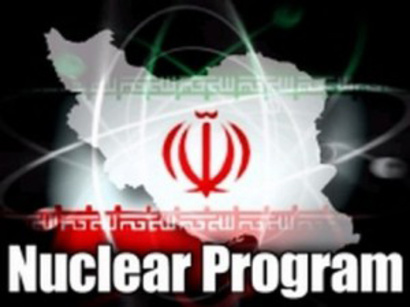17 interesting facts about Iran’s nuclear program

By Umid Niayesh
Today over 30 countries around the world use nuclear energy with
about 440 operating nuclear power plants. The Islamic Republic of
Iran is one of them, and that country specifically has been in the
media spotlight for the last 10 years.
Why? Is it controversial? Is it dangerous? Should it be contained?
As of yet, Pakistan is the only Muslim country with nuclear weapon.
Iran, according to some world powers, is trying to become the
second one.
There are at least ten articles being published on Iran's nuclear
program all over the internet. The US and its west allies suspects
Iran of developing a nuclear weapon - something that Iran denies.
The Islamic Republic has on numerous occasions stated that it does
not seek to develop nuclear weapons, using nuclear technology for
electricity generation and medical purposes instead.
So, what is Iran's nuclear program that everyone talks about? Below
is a list of interesting facts about what Iran claims is its
"Inalienable right".
1. The nuclear program of Iran was launched in the 1950s during the
Shah regime with the help of the United States as part of the
“Atoms for Peace" program. Under the agreement, the United States
agreed to provide Tehran with a nuclear research reactor and
several power plants.
2. Why did Iran need the nuclear program in the first place?
According to the Shah, at the time, the goal of the program was to
save "valuable petroleum for high-value products, not just simple
electricity generation."
3. First nuclear reactors in Iran were built under the program by
American Machine and Foundry (AMF) - one of the largest
recreational equipment companies in the United States.
4. The US and other European governments participated in
development of Iran's nuclear program until the 1979 - the year,
when Iran lived through a revolution, which had Shah Mohammad Reza
Pahlavi overthrown.
5. Iran's nuclear program wasn't painless, so to speak. Former
Iranian foreign minister Abbas Ali Khalatbari became the first to
pay the price. Following the 1979 Revolution, he was arrested and
sentenced to death on charges of corruption and treason. He was
reportedly charged of wasting country’s assets signing the contract
to build the Iran’s first nuclear power plant.
6. After the revolution, Ayatollah Ruhollah Khomeini became the
Supreme Leader of Iran. At the time, during the first several years
after the revolution, the country's officials were against the
nuclear program. New Iranian government canceled the US contract to
build two nuclear power plants in the city of Bushehr on the Gulf
coast. An article in one of Iran's official newspapers at the time
said: "Nuclear Power Plants: An Obvious Treason to Our Nation."
7. Iran did have some period of time, when the government was
pursuing nuclear weapons, in particular during the eight-year war
with Iraq, however both the founder of the Islamic Republic
Ayatollah Ruhollah Khomeini and the current Supreme Leader, Ali
Khamenei opposed nuclear weapons. Khamenei even declared a fatwa
(religious decree), which called pursuit and possession of nuclear
weapons as "grave sin".
8. In 1986 Iran bought its centrifuge from Pakistan then
transported it in a private jet to Tehran, without Pakistani
officials knowing anything about the deal. Pakistan’s top nuclear
scientist Abdul Qadeer Khan provided Iran's secret nuclear program
with centrifuges for the first time.
9. Iran's nuclear program became public in 2002, when an opposition
group revealed secret activity including construction of a uranium
enrichment plant and a heavy-water reactor in the country. Enriched
uranium can be used to make nuclear weapons, and spent fuel from a
heavy-water reactor contains plutonium suitable for a bomb.
10. Once Iran's nuclear program started to gain attention, the
country wasn't able to prove its peacefulness. This led to the U.S.
and its European allies press Iran into halting enrichment of
uranium, which can be used both for civilian purposes and for
building nuclear bombs.
11. In 2003 Iran made a deal with UK, France and Germany regarding
its nuclear program, and agreed to suspend its uranium enrichment,
and allow for international inspection to take place on its soil.
However, two years later, Iran stopped implementing the agreement,
as the EU presented the country with "inadequate" proposals.
12. Iran's nuclear program, throughout the years, was considered
fairly safe, yet between 2010-2012, at least four nuclear
scientists were killed in terror attacks, which, according to
experts, were set to disrupt Iran's nuclear program.
13. The first round of UN sanctions against Iran was approved in
December of 2006.
14. The latest reports indicate that Iran has at least 18 known
nuclear facilities, including uranium enrichment plants (Natanz,
Fordow), nuclear power plants (Bushehr, Darkovin (under
construction), research facilities (Esfahan, Tehran), Uranium
Conversion Facility (Esfahan), Yellowcake Production Plants
(Ardakan), uranium ore mines (Saghand, Gchine), and nuclear waste
storage sites(Anarak, Karaj).
15. A 2013 Gallup survey indicated that 56 percent of Iran's adult
population (total population - 77 million people), support the
nuclear program, while 41 percent disapprove the idea.
16. Centrifuges are used for enrichment of uranium, which can be
used for creating a nuclear weapon. Iran, as of current, has 19,000
centrifuges, of which 9,000 are fully engaged in enrichment
activities.
17. Under the pressure of international sanctions, many spheres in
Iran suffered a decline. In decline were: car manufacturing sector,
medicine imports, aviation, oil and petrochemical sector, money
transfers (banking), the country's national currency, tourism
sector, decline in investments, etc.
Here we are to serve you with news right now. It does not cost much, but worth your attention.
Choose to support open, independent, quality journalism and subscribe on a monthly basis.
By subscribing to our online newspaper, you can have full digital access to all news, analysis, and much more.
You can also follow AzerNEWS on Twitter @AzerNewsAz or Facebook @AzerNewsNewspaper
Thank you!
